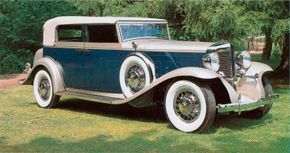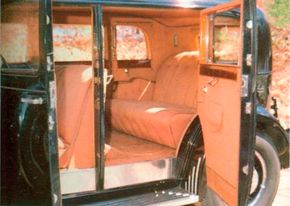For years the 16-cylinder automobile has been identified in the public's collective mind exclusively with Cadillac. But there was another fine Sixteen back in the early Thirties: the Marmon.
The 1931-1933 Marmon Sixteens were fine automobiles, and in a number of respects, superior to the Cadillac. That fact was duly recognized at the 1932 New York Automobile Show when the Society of Automotive Engineers declared the Marmon Sixteen engine to be "the year's most noteworthy automotive accomplishment," an honor that Cadillac has yet to receive.
Advertisement
Marmon had been building automobiles ever since 1902, when Howard Marmon, the company's vice-president of engineering, constructed an air-cooled V-2 for his own use.
The second Marmon, built the following year, ran with a V-4. Half a dozen of these cars were built and sold that season, mostly to friends of Howard Marmon and his older brother, Walter. Production rose to 25 cars in 1905, and a one-off V-6 was also built that year. By 1906, Marmon had come up with a big 65-horsepower, air-cooled V-8. It was a pioneering effort, produced nearly nine years before the first Cadillac V-8, but it failed to get beyond the prototype stage.
In 1909, a pair of conventional water-cooled, T-head, four-cylinder Marmons made their debut. One of these, the Model 32 -- a very advanced car for its time -- would remain in production as the company's mainstay as late as 1914. In all of these early cars, Howard Marmon insisted upon two characteristics: light alloy construction and perfect lubrication. While virtually all of Marmon's competitors clung to the old dipper-and-splash method, the Model 32 featured a gear-driven oil pump with pressure delivery to all bearings.
A major boost to the Marmon reputation for performance came with the introduction, in December 1915, of the Model 34. This car was powered by a highly advanced overhead-valve six. Displacing 339.7 cubic inches, it developed 74 horsepower. Block and crankcase were an integral aluminum casting, something virtually unheard of at that time. Pistons, intake manifold, pushrods, even the water pump were made of aluminum alloy. Iron was used only for the head and cylinder liners.
Nor was the use of aluminum confined to the engine. The transmission case and differential housing, plus the body, hood, and even the fenders were made of lightweight aluminum alloys. As a result, the Model 34 weighed in some 700 pounds lighter than the contemporary Cadillac, giving it a substantial performance edge. It was also the more expensive of the two. In 1916, for example, the Model 34 Marmon touring car sold for $2,900, while a Cadillac in the same body style could be purchased for $2,080.
On the next page, get more information regarding the evolution of the Marmon Sixteen.
Want more information on cars? See:
- Classic Cars
- Muscle Cars
- Sports Cars
- Consumer Auto Guide
- Consumer Auto Guide Used Car Search
Advertisement



